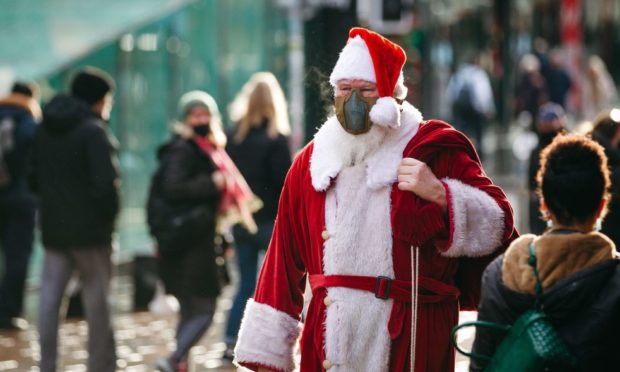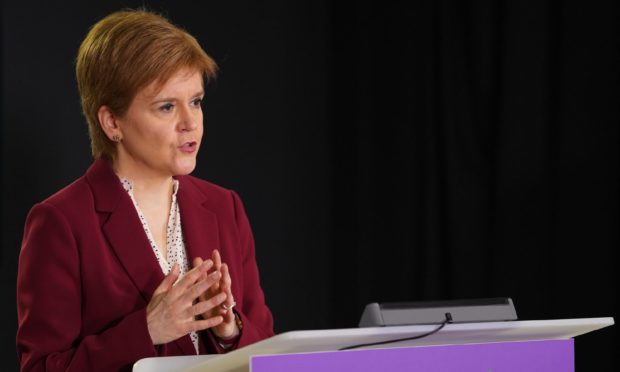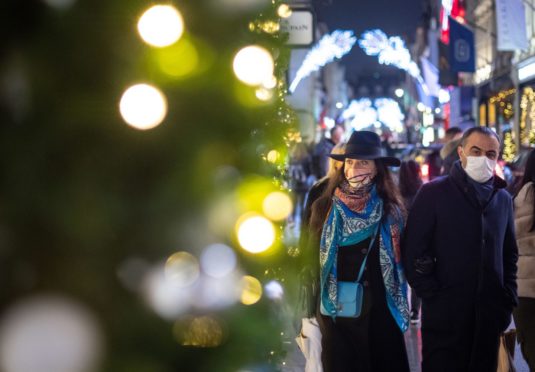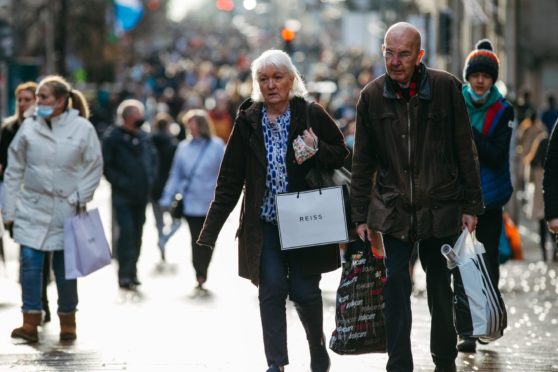
Scotland is in for a festive season like no other in living memory as a result of the Covid-19 pandemic.
A slight easing of the country’s coronavirus restrictions for a few days over Christmas seemed set in stone until earlier this week, when rising infections led to doubts and outright confusion.
After days of speculation, Downing Street said there will be no changes to the laws on forming special Christmas “bubbles” across the UK as a whole.
On Wednesday afternoon, the Scottish Government issued strengthened advice on the festive rules and clarified its stance on what families and individuals can and cannot do throughout the five-day easing of coronavirus measures.
Scots are being asked to adhere to strict new guidance throughout the Christmas period.
People have been urged not to form bubbles at all if possible, with First Minister Nicola Sturgeon calling on those who do so to keep them as small as possible.
‘Safest way to spend Christmas is to stay home’
Speaking at Wednesday’s daily Covid-19 briefing, the First Minister said: “Firstly and unequivocally the safest way to spend Christmas this year for you and for those you love is to stay within your own household and your own home.
“My strong recommendation is this is what you should do if at all possible.”
She said any mixing with other households should take place outside, if possible, but that if it was “essential” to meet indoors people should limit the time of that meeting and the numbers involved as much as possible.
Ms Sturgeon recommended that those people forming a Christmas bubble should only meet up with people for one day, if possible, and not stay overnight “unless it is unavoidable”.
She also stressed the need to limit numbers, saying: “In short, if you have to form a bubble keep it as small as possible.”
She added: “If you haven’t made plans to form a bubble, please don’t.
“If you are still swithering, please decide against. And if you have made plans but think they are not really essential, please think about postponing until later in the year.
“The reality is that this Christmas simply can’t be normal. But we have every reason to hope that next year’s will be much more normal.”
Forming a ‘Christmas bubble’
A Christmas bubble can be formed in Scotland between December 23 and 27 as a way of reducing “loneliness and isolation” over the festive period.
It should be made up of no more than three separate households and up to eight people in total. This can include one extended household. The eight-person limit does not include children under 12.
Youngsters whose parents are separated can move between their parents’ homes/switch between bubbles. This includes supervised and unsupervised visits.
Students who returned home at the end of term will be considered part of the household they have re-joined.
People who live in shared flats or houses are being advised by the Scottish Government not to split up and join different bubbles over Christmas. Students are the exception to this rule.
If flatmates or housemates do separate to form different bubbles, they need to self-isolate for seven days before and after joining their new Christmas group.
Bubbles cannot be formed if a person is self-isolating.
If a member of a Christmas group develops symptoms of Covid-19, everyone within it must self-isolate until a test result is received. If it is positive, everyone in the bubble will have to quarantine.
Travel
Restrictions in Scotland are being eased between December 23 and 27 to allow people from the rest of the United Kingdom, Ireland, the Channel Islands and Isle of Man to travel to the country to join a Christmas bubble.
However, this is where the easing of Scotland’s travel measures ends.
On arrival in the bubble, strict rules in place across the country’s council areas – as set out under the tiered system for controlling the pandemic – will remain in place and should be adhered to.
You must only travel to meet those within your Christmas bubble within the specified dates of December 23 to 27.
Journeys to Scotland can begin on December 22; however, December 27 is a designated “return date” following the Christmas easing of rules.
Overnight journeys should begin on this day. The only exception to this is if travel is disrupted, or you are required to self-isolate.
During Wednesday’s briefing Ms Sturgeon urged Scots forming bubbles not to travel from areas with a high rate of coronavirus infections to those with low rates.
People living in level three or four areas cannot travel abroad for non-essential reasons. Those in tiers one or two are also being advised not to.
Meeting places: Parks are fine, pubs are not
You can meet with or stay in the home of a bubble member; however, people from different households must not stay within the same bedroom.
The newly-formed groups should not visit shops, pubs, bars, restaurants, cinemas or other entertainment venues together. This can only be done with members of your household and not your Christmas bubble.
You can link up with bubble members in gardens, public outdoor spaces and in places of worship.
Self-catering accommodation can be booked for stays during this period, but only if at least one person is from the local authority area it is located within.
The Scottish Government says hotels and B&Bs cannot be used as a “base” for bubbles but can be used by individual households if needed while visiting a member.
The government advice states that second homes are permitted for use, but “only where this is located in a council area that you or a member of your bubble lives in”.
Do not change your bubble
Households cannot form more than one bubble, or change its members after it has formed.
People are being asked to limit contact with others before and after forming their bubble.
Meeting with people who are not in your bubble, either indoors or outdoors, is not permitted.
Do not let hygiene slip
Social distancing should be maintained between people who are not part of the same household, and meetings should be limited.
Household items such as cutlery should not be shared, and hands must be washed frequently with surfaces kept clean.
Vulnerable people
The Scottish Government advises those hoping to visit a loved one in a care home, hospital or hospice not to form a bubble.
You can still visit other households to provide care to a vulnerable person, even if they are not within your Christmas bubble. However, strict health and hygiene protocols should be followed and maintained.
‘The virus won’t take Christmas off’
The Scottish Government’s guidance stresses that the safest way to spend the Christmas holidays is to stay at home and within your local area.
It reads: “The safest way to spend Christmas and the festive period is to stay in your own household, in your own home and your own local area.
“But we recognise that isolation and loneliness can hit people hard over the Christmas period. To help reduce this, we are temporarily changing some rules on meeting other people.
“Just because we are allowing people to meet up in a limited way does not mean that you have to do so. It is a personal choice.
“Everyone should think carefully about the risks involved in increasing the number of people you have contact with, particularly if you or your loved ones are at a higher risk from coronavirus.
“The virus won’t take Christmas off. If we provide it with opportunities to spread from household to household, it is likely to take them.”
The full Scottish Government Christmas bubble guidance can be found here.

Enjoy the convenience of having The Sunday Post delivered as a digital ePaper straight to your smartphone, tablet or computer.
Subscribe for only £5.49 a month and enjoy all the benefits of the printed paper as a digital replica.
Subscribe

